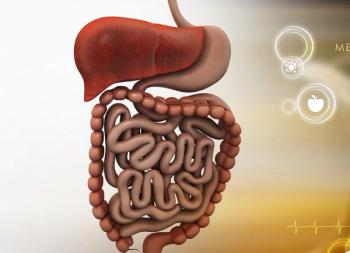
- ONCOLOGY Vol 16 No 3
- Volume 16
- Issue 3
Phase II Trial of CHOP Followed by Rituximab, a Chimeric Monoclonal Anti-CD20 Antibody, for Treatment of Newly Diagnosed Follicular Non-Hodgkin’s Lymphoma: SWOG 9800
The optimal therapy for advanced-stage follicular lymphoma is unknown. Combination chemotherapy usually induces remissions in most patients; however, nearly all patients eventually progress and there is no clear plateau on disease-free survival analysis. Single-agent treatment with the monoclonal anti-CD20 antibody rituximab (Rituxan) at 375 mg/m² weekly × 4 doses induces response rates of approximately 50% to 60% in patients with relapsed follicular non-Hodgkin’s lymphoma. In some patients, the molecular detection of disease by polymerase chain reaction assay may be eliminated following antibody therapy.
The optimal therapy for advanced-stage follicular lymphoma is unknown.Combination chemotherapy usually induces remissions in most patients; however,nearly all patients eventually progress and there is no clear plateau ondisease-free survival analysis. Single-agent treatment with the monoclonalanti-CD20 antibody rituximab (Rituxan) at 375 mg/m² weekly × 4 doses inducesresponse rates of approximately 50% to 60% in patients with relapsed follicularnon-Hodgkin’s lymphoma. In some patients, the molecular detection of diseaseby polymerase chain reaction assay may be eliminated following antibody therapy.
The Southwest Oncology Group (SWOG) investigated the safety and efficacy ofadjuvant therapy with rituximab following conventional chemotherapy in 49 SWOGinstitutions. Patients were treated with six cycles of standard CHOPchemotherapy (cyclophosphamide [Cytoxan, Neosar] at 750 mg/m², doxorubicin HClat 50 mg/m², vincristine [Oncovin] at1.4 mg/m², and oral prednisone at 100 mg for 5 days), given at 3-week intervals.Patients with at least a partial (PR) or complete remission (CR) 4 weeksfollowing the sixth cycle of CHOP were given four doses of rituximab at 375mg/m² each week.
Objectives were to evaluate safety and determine 2-year failure-free survival and the rate of disappearance of clonal bcl-2oncogene rearrangements from the peripheral blood and bone marrow following CHOPand rituximab. A total of 104 patients were registered to the study at closureon November 15, 1998, and 85 were determined eligible. The median age was 53years (range: 27-76 years), 54% were male, and 10% had bulky stage II disease,34% stage III, and 57% stage IV. Thirty percent had B symptoms and 31% had bulkydisease.
Following CHOP chemotherapy, one patient died of infection. Grade 4toxicities included 25 hematologic events, 1 cardiovascular, 1 gastrointestinal,and 1 unknown. There were 74 eligible patients registered to receive rituximab,and 73 were evaluable for toxicity. Following rituximab, 1 patient had grade 4neutropenia and 12 patients had grade 3 toxicity.
A total of 84 patients have been evaluated for response following thecombination of CHOP and rituximab. Fifty-four percent had a confirmed orunconfirmed CR and 18% a PR, for an overall response rate of 72%. Improvement inresponse following rituximab occurred in 16 patients (19%), with PR to CR in 14patients, stable to CR in 1 patient, and unconfirmed CR to confirmed CR in 1patient. Serial molecular monitoring of the t(14:18) translocation in the bloodand bone marrow was performed and is being analyzed. The 2-year progression-freesurvival rate was 76% and the 2-year overall survival rate was 95%.
CONCLUSION: The addition of rituximab following conventional CHOPchemotherapy is well tolerated and provides additional antitumor activity. Theprospective randomized ongoing trial SWOG 0016 is currently evaluating CHOP vsCHOP and combinations with rituximab or tositumomab/iodine-131 tositumomab (Bexxar)for the treatment of newly diagnosed advanced-stage follicular lymphoma.
Articles in this issue
almost 24 years ago
Single-Agent Rituximab in Early-Stage Chronic Lymphocytic Leukemiaalmost 24 years ago
Recruitment for Trial of Adjuvant Trastuzumab Under Wayalmost 24 years ago
Rituximab in the Treatment of Acquired Factor VIII Inhibitorsalmost 24 years ago
Support for New Medicare Pay Formulaalmost 24 years ago
Irinotecan-Containing Regimen Improves Survival in Small-Cell Lung CancerNewsletter
Stay up to date on recent advances in the multidisciplinary approach to cancer.

























































































